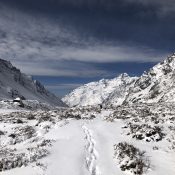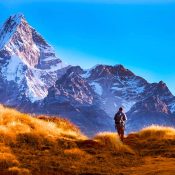Hiking at High Altitudes: Do’s and Don’ts for a Safe Trek

Hiking at High Altitudes: Do’s and Don’ts for a Safe Trek
Do’s and Don’ts When Hiking at High Altitudes: What the Mountains Taught Me
The View Was Worth It — But So Was the Lesson
I thought I was ready. I had the gear, the itinerary, and the enthusiasm for hiking at high altitudes. But by day four of my high-altitude hike — somewhere between the trails to Everest Base Camp, the ridgelines of Annapurna Circuit, and the wild beauty of Manaslu — I was gulping air like it was running out and wondering why my heart felt like it was sprinting uphill on its own.
Turns out, the mountain was teaching me something no guidebook had: it’s not strength that gets you through altitude — it’s awareness.
So, whether you’re planning a trek to Langtang Valley, Upper Mustang, or any of Nepal’s iconic peaks, here are the do’s and don’ts I learned the hard way — and the kind that might just save your trek.
DO: Respect the Altitude and Acclimatize Properly
Altitude sickness doesn’t care how fit you are. It hits when you climb too high too fast. I learned to slow down — hiking during the day, but sleeping at lower elevations whenever possible. Taking rest days isn’t being lazy — it’s being smart. Your body needs time to adjust to thinner air.
DON’T: Rush to the Next Destination
One of the biggest mistakes I made was sticking to a fixed schedule like it was a deadline. But in the mountains, your itinerary should be flexible. If your body is telling you to rest, listen. No summit is worth pushing through symptoms like headaches, nausea, or dizziness.
DO: Stay Hydrated While Hiking at High Altitudes
I didn’t feel thirsty at all — that was the problem. When hiking at high altitudes, hydration is your best friend. Even when you don’t feel thirsty, your body is working harder with every step.. I started sipping water regularly, even when I wasn’t craving it. Adding electrolyte powder was a game-changer.
DON’T: Wait Until You Feel Thirsty at High Altitudes
By the time you realize you’re thirsty, you’re already behind. Dehydration can make altitude sickness worse, and it sneaks up quietly. Make water your constant companion — your best gear weighs nothing.
DO: Fuel Up with High-Energy Foods
When trekking, your body burns calories like a furnace. Even if your appetite drops, you need fuel. I carried trail mix, protein bars, and lots of carbs. Eating small portions often helped keep my energy up without overloading my stomach.
DON’T: Ignore Your Diet
Skipping meals or eating poorly at altitude is a silent risk. You may feel like sleeping through dinner, but your body needs every bit of energy to perform and recover. Even if it’s just soup and crackers — eat something.
DO: Dress in Layers and Be Weather-Ready
At sunrise, it was freezing. By noon, I was sweating under the sun. Layering saved me. I could add or remove clothes as the temperature shifted, and having a windproof outer shell kept me protected from unexpected chills at higher altitudes.
DON’T: Overpack or Underprepare
Bringing too much gear slows you down; bringing too little makes you miserable. Find the balance. Focus on essentials: thermal base layers, waterproof outerwear, gloves, hat, sunglasses, sunscreen — and trust me, never forget the lip balm.
DO: Take Rest Days Seriously When Hiking at High Altitudes
The day I skipped rest, I paid for it with a pounding headache and a sleepless night. Giving your body a day to recover isn’t wasting time — it’s what allows you to keep going strong.
DON’T: Brush Off Early Symptoms During Hiking at High Altitudes
Ignoring even mild signs of altitude sickness is a dangerous game. If you feel off — stop. Rest. If it gets worse, descend. No view, photo, or “achievement” is worth risking your health.
DO: Plan for Emergencies While Hiking at High Altitudes
Hope for the best, but plan for the worst. Carry a basic first-aid kit, any altitude medication your doctor recommends, and make sure your insurance covers emergency evacuations. It’s not being paranoid — it’s being prepared.
Final Thoughts from the Hike in High Altitudes
Hiking at high altitudes isn’t just about reaching a destination — it’s about surviving and thriving in extreme conditions with the right mindset.. But the mountain doesn’t care how excited or experienced you are — it demands humility.
If you remember nothing else, remember this: go slow, drink water, listen to your body, and never push past pain. The trail will still be there tomorrow.
One thought on “Hiking at High Altitudes: Do’s and Don’ts for a Safe Trek”
Add a Comment
All Categories
Quick booking process
+977-9803633878





Good shout.